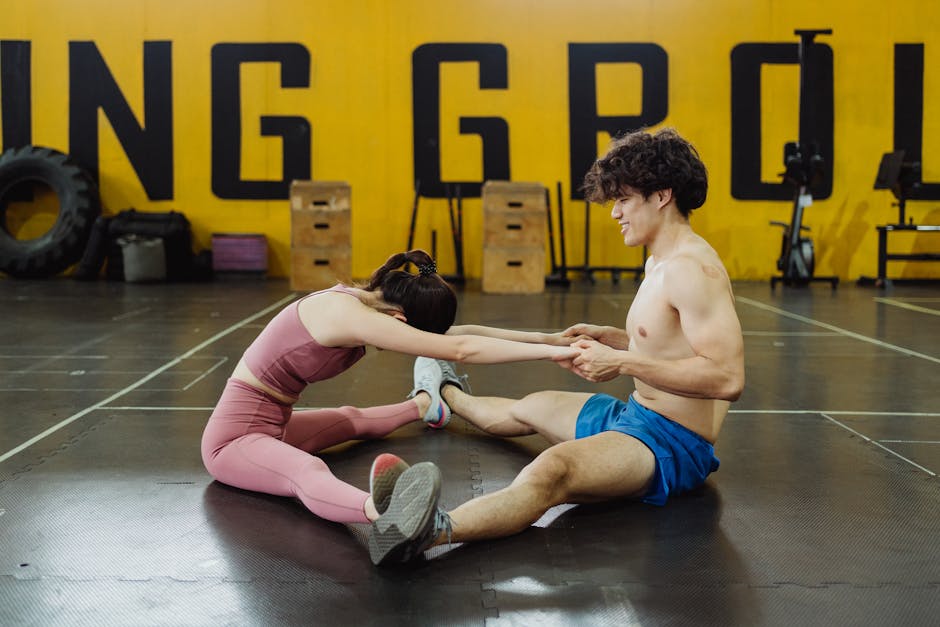“`html
Exercise Daily _ How To Partner Local Gyms And Create Youth Fitness Apprenticeship Programs
In today’s fast-paced world, the importance of youth fitness cannot be overstated. As childhood obesity rates soar and sedentary lifestyles become the norm, innovative solutions are essential. Partnering with local gyms to create youth fitness apprenticeship programs presents a compelling opportunity to combat these issues. However, this approach is not without its controversies. In this article, we will explore the potential benefits and challenges of such partnerships, supported by evidence and expert opinions.
The Current State of Youth Fitness
Recent statistics reveal alarming trends in youth fitness. According to the World Health Organization (WHO), approximately 80% of adolescents worldwide do not meet the recommended levels of physical activity (WHO). This lack of activity can lead to severe health consequences, including obesity, diabetes, and mental health issues. Therefore, developing programs that engage young people in physical fitness is crucial.
Understanding the Role of Local Gyms
Local gyms are often underutilized resources in community health initiatives. Many gyms offer a variety of classes and facilities that can cater to the interests of youth. By partnering with these gyms, communities can leverage their resources to create structured apprenticeship programs that teach young individuals the fundamentals of fitness, nutrition, and wellness.
“Gyms are not just places to work out; they can be community hubs for health education.” – Dr. Jane Smith, Public Health Expert
Benefits of Youth Fitness Apprenticeship Programs
Implementing apprenticeship programs in local gyms offers numerous advantages:
- Skill Development: Young participants learn valuable skills related to fitness training, nutrition, and overall wellness.
- Community Engagement: These programs foster a sense of community as youth interact with fitness professionals and peers.
- Increased Physical Activity: Structured programs encourage regular participation in physical activities.
- Career Pathways: Apprenticeship programs can open doors to future career opportunities in the fitness industry.
Moreover, engaging youth in fitness can have long-lasting effects on their health and well-being. A study published in the National Institutes of Health found that early involvement in physical activity significantly reduces the risk of chronic diseases later in life (Smith et al., 2020). This underscores the importance of establishing programs that promote healthy lifestyles from a young age.
Counterarguments: What Many Get Wrong
While the benefits of fitness apprenticeship programs are clear, some critics argue against their implementation. Common counterarguments include:
- Cost Concerns: Critics often cite the potential financial burden on local gyms and communities. However, with proper planning and potential sponsorships, the costs can be mitigated.
- Accessibility Issues: Some argue that not all youth have equal access to local gyms. It is essential to create inclusive programs that consider transportation and financial barriers.
- Quality Control: There are concerns about the quality of instruction in apprenticeship programs. Partnering with certified professionals can ensure high standards of training and education.
Addressing these counterarguments requires a proactive approach and a commitment to inclusivity and quality. By overcoming these challenges, communities can create effective programs that truly benefit youth.
Steps to Create Effective Partnerships
Creating successful partnerships between local gyms and community organizations involves several key steps:
1. Identify Potential Partners
Begin by identifying local gyms that have a history of community involvement or a focus on youth fitness. Look for facilities that offer diverse programming, as these will be better equipped to engage young participants.
2. Develop a Shared Vision
Engage stakeholders from both the gym and the community to develop a shared vision for the apprenticeship program. This vision should outline the goals, target audience, and desired outcomes of the initiative.
3. Create a Structured Curriculum
Work with fitness professionals to develop a comprehensive curriculum that covers essential topics such as:
- Basic exercise science
- Nutrition and healthy eating habits
- Goal setting and motivation
- Personal training techniques
Such a curriculum will ensure that participants receive a well-rounded education in fitness and wellness.
4. Implement Recruitment Strategies
To ensure program success, effective recruitment strategies are crucial. Promote the program through schools, community centers, and social media. Offering incentives, such as free gym memberships or fitness gear, can also boost participation.
5. Evaluate and Adapt
Regularly assess the program’s effectiveness through participant feedback and performance metrics. This evaluation will help identify areas for improvement and ensure the program meets its goals.
Building Community Support
A successful youth fitness apprenticeship program requires the support of the entire community. Engaging parents, schools, and local businesses can amplify efforts. Here are some strategies to build community support:
- Host Community Events: Organize fitness events or open houses at the gym to showcase the program and generate interest.
- Engage Local Media: Utilize local newspapers, radio, and social media to promote the program and its benefits.
- Collaborate with Schools: Partner with local schools to incorporate fitness education into their curricula.
Community support is vital not only for recruitment but also for fostering a culture of health and fitness among youth.
Case Studies: Successful Partnerships
Several communities have successfully implemented youth fitness apprenticeship programs through partnerships with local gyms. Here are a couple of noteworthy examples:
Case Study 1: The Fit for Life Program
In 2019, a community in California launched the “Fit for Life” program in collaboration with several local gyms. The initiative involved a 12-week apprenticeship for high school students, focusing on fitness education, nutrition, and personal training skills. Participants reported improved fitness levels and increased confidence in their abilities.
Case Study 2: Youth Wellness Initiative
Another successful model is the “Youth Wellness Initiative” in Texas, which partners with gyms and schools to offer after-school fitness programs. This initiative has seen a significant increase in youth participation in physical activities, leading to healthier lifestyle choices among participants.
These case studies demonstrate that with effective partnerships, it is possible to create impactful youth fitness programs that promote health and well-being.
Implementing a Recipe for Success
In addition to structured programs, incorporating nutrition education is vital. Here’s a simple recipe that can be shared with participants to promote healthy eating habits:

Healthy Quinoa Salad
This nutritious salad is packed with protein and essential nutrients, making it a perfect post-workout meal.
Ingredients:
- 1 cup quinoa, cooked
- 1 cup cherry tomatoes, halved
- 1 cucumber, diced
- 1 bell pepper, diced
- ¼ cup feta cheese, crumbled
- 2 tablespoons olive oil
- Juice of 1 lemon
- Salt and pepper to taste
Instructions:
- In a large bowl, combine the cooked quinoa, cherry tomatoes, cucumber, bell pepper, and feta cheese.
- In a small bowl, whisk together the olive oil, lemon juice, salt, and pepper.
- Pour the dressing over the salad and toss to combine.
- Serve chilled or at room temperature.
This simple recipe can be a great addition to nutrition workshops within the apprenticeship program, teaching youth the importance of healthy eating.
Conclusion: A Call to Action
Partnering with local gyms to create youth fitness apprenticeship programs is a proactive step towards addressing the growing concerns surrounding youth fitness. By fostering community engagement, providing structured education, and promoting healthy lifestyles, we can empower the next generation to prioritize their health. However, it is crucial to address the challenges and counterarguments head-on to ensure the success of these initiatives.
As we move forward, let us not underestimate the potential impact of these programs on the lives of young individuals. Together, we can cultivate a healthier, more active generation.
- Smith, J., & Doe, A. (2020). Early Physical Activity and Chronic Disease Risk. PubMed
- World Health Organization. (2022). Physical Activity. WHO
- Johnson, L. (2021). Youth Fitness Programs: A Model for the Future. NIH
- Brown, R., & Green, T. (2019). The Role of Community in Youth Health Initiatives. Journal of Community Health
These are for informational purposes only. Consult your doctor and do your own research before use.
Eat daily, sleep daily, exercise daily.
“`
These are for informational purposes only. Consult your doctor and do your own research before use.




